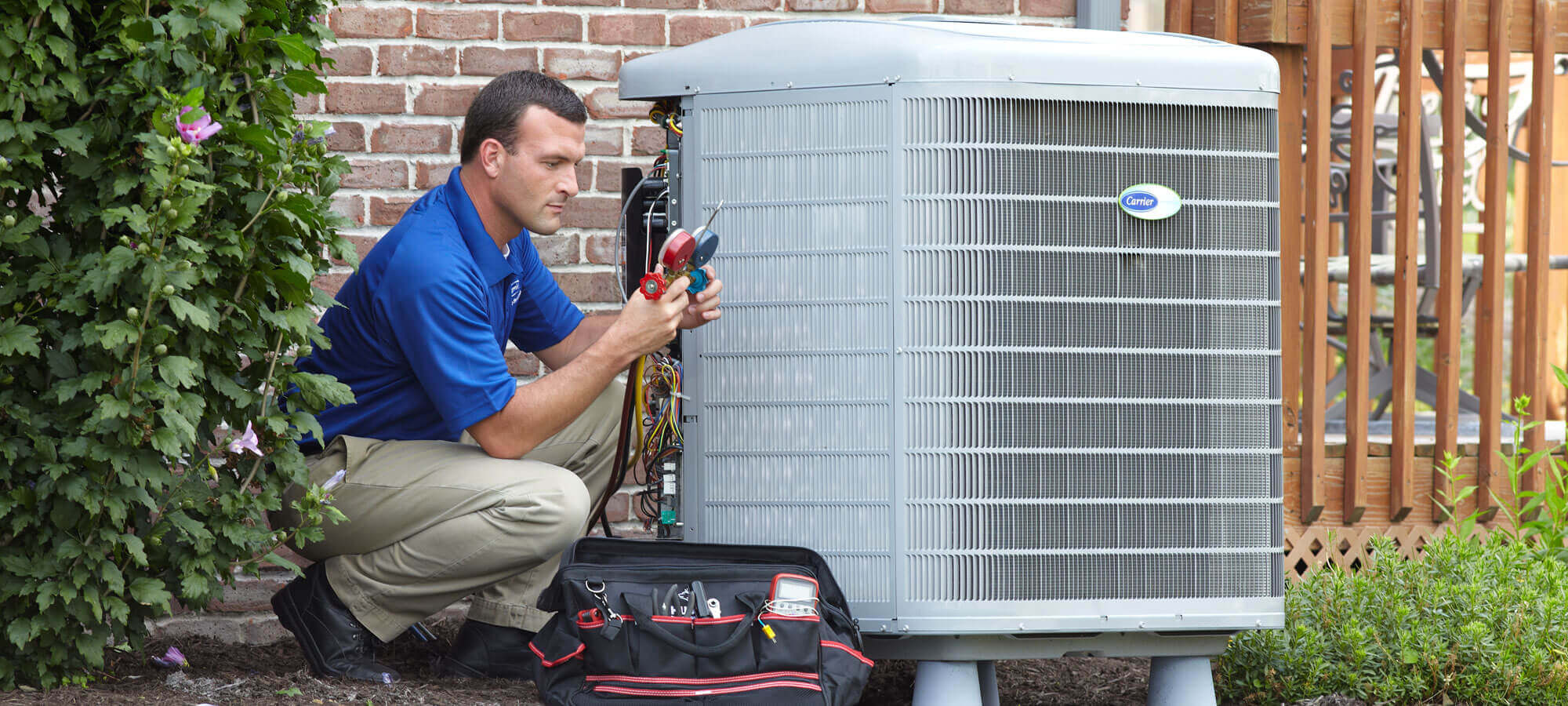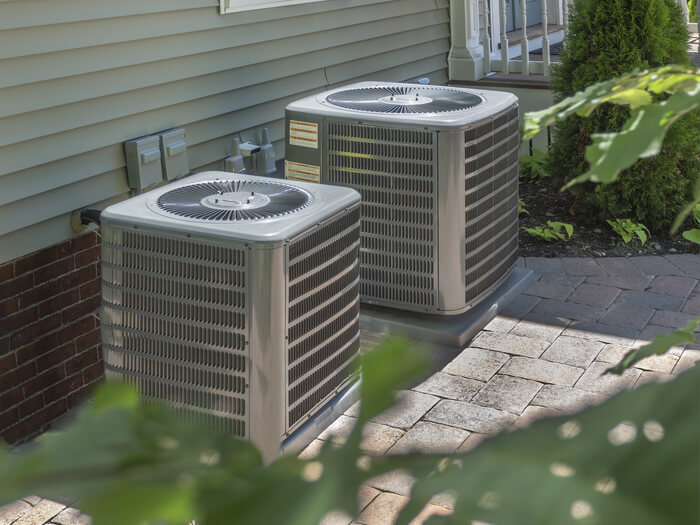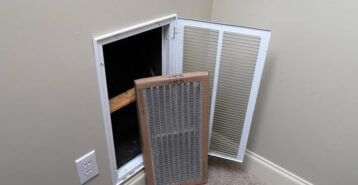Whether you are replacing an existing HVAC system or installing a new system, you may be wondering what HVAC unit size you will need. With many types of HVAC systems on the market, as well as several efficiency ratings to consider, it can be tricky to understand the HVAC sizing that is right for your home and geographical region.
HVAC is an acronym meaning “heating, ventilation, and air conditioning.” All systems are designed to keep indoor environments comfortable year-round. Systems can run on gas, electric, or a furnace. There are four general categories for HVAC systems. This guide will provide information about each type and what it covers to help you make an informed decision.
AC Unit Sizes: Which Size Air Conditioner You Need?
Every HVAC system will come with a number describing its cooling capacity. Cooling capacity is essentially a way to make sure the system you choose is adequate for your home and space.
To figure out the cooling capacity you need, multiple the square footage of the space you need cooled by 25. The resulting number is your BTU (British Thermal Units). So, for example, a 1,000 square foot room needs a unit with a cooling capacity of 25,000 BTU. Another term you will see used often for HVAC systems’ cooling capacities is “ton.” A ton equals 12,000 BTU, which would adequately cool about 500 square feet. We list BTU/tonnage where applicable for each system described below.
The following chart is an estimation for tonnage coverage based on the square footage of your property. You’ll also want to take into consideration the climate where your property is located to ensure you have appropriate tonnage to handle the varying temperatures in your area.
| Room Size | Tonnage Your Air Conditioner Needs |
|---|---|
| 600 to 1100 square feet | 1.5 tons |
| 901 to 1400 square feet | 2 tons |
| 1201 to 1650 square feet | 2.5 tons |
| 1501 to 2100 square feet | 3 tons |
| 1801-2300 square feet | 3.5 tons |
| 2101 to 2700 square feet | 4 tons |
| 2401 to 3300 square feet | 5 tons |
You can also use our Air Conditioner Size Calculator, which will show you what size A/C unit you need for your home and climate.
Cooling Only Split-System
Ideal for residential or commercial buildings with minimal square footage, the cooling only split-system works with the use of a condensing unit that uses an outdoor condenser coil and compressor. Indoors, an air handling unit consists of a cooling coil and a supply air fan.
Of all of the available HVAC units, the cooling only split-system has a top energy efficient rating (EEC).
Split systems are also available that provide both heating and cooling. On average, the cooling capacity ranges from 2.5kW to 7.1kW and 3.2 to 8.1kW heating capacity, depending on the manufacturer.
Ductless HVAC System Sizes
A ductless heating and cooling system is one of the easiest to install. It goes on either the ceiling or the wall. It is also one of the most reliable systems. A ductless HVAC system consists of an indoor unit with a fan and coil, an outdoor compressor, and a remote control.
A mini-split ductless system provides high energy efficiency and superior heating and cooling comfort for a specific zone in the home using both an indoor and outdoor unit operated by remote control.
A multi-split indoor unit offers the same attributes of easy installation, energy efficiency, and comfort. The difference between the two systems is a multi-split indoor ductless system can be expanded to cover up to five specific zones each connected to the one outdoor unit.
There’s also a multi-split outdoor unit that also allows the connection to a maximum of five individual zones to the outdoor unit as well as providing the flexibility of providing individual control of each of the five zones.
Depending on the type of ductless system chosen, BTU ranges from 9,000 to 34,6000. These systems can have EER (energy-efficiency ratings) of 8.2 to 14.2. An EER of of 8.5 or above is ideal for an HVAC unit, and an EER 12 and above is considered excellent.
Heat Pump Sizes
Unlike cool only systems, a heat pump works to provide both cooling and heating.
The design of the heat pump allows the system to cool the interior via a special valve that keeps the interior cool during the warm months, and when the valve is reversed, the system warms the indoor air during colder months. The system generates heat and cold by pulling air from the outside or the ground. It is a reliable and energy efficient system.
Heat pumps come in a wide range of sizes. Depending on the manufacturer, for example, systems can range from 1.5 tons up to 5 tons — that’s a cooling capacity of 17,600 to 56,000 BTU.
Since this unit can also heat your home, you want to be aware of another rating to check: the heating efficiency (HSPF). Anything of an 8.2 HSPF or above is award an ENERGY STAR label. Heat pumps’ HSPF varies from 8.2 to 10, depending on the furnace or AC brand manufacturer.
HVAC Packaged-System Sizes
A packaged system is an all-in-one unit providing both heating and cooling. There are four types available – heat pump, gas/electric, dual fuel, and air conditioner systems.
The packaged heat pump is discussed above. It is a versatile system providing cooling and heating, and it uses electricity as a backup option for providing heat.
The gas/electric system is a quiet and efficient system with all components housed in one cabinet. The gas electric system provides cooling as well as heating, supplied by a gas furnace. They typically have an excellent EER rating of 12. They range in capacity from two tons to five tons.
A dual fuel heating and cooling system is an eco-friendly option that consists of a dual-stage furnace and a high-efficiency heat pump contained in one cabinet. It is available in either single or two-stage heating and cooling, and is especially ideal for cold climates. These units are also available in up to 5 tons.
Like split systems, a dual fuel system may quality for a federal tax credit if the system is certified by Energy Star.
Packed HVAC Systems: What’s Included?
Air conditioner packaged systems consist of three parts:
- a heat pump
- an air conditioner
- a gas furnace
SEER ratings range from 13.00 to 15.00, EER ratings from 11.4 to 12, and tonnage from 2 to 5 tons.
All of the components are assembled into one durable cabinet. With this type of system, homeowners can expect high-energy efficiency and superior cooling.
Before buying, do your research on the best type and size unit for your property. Purchasing a unit that is too large or too small results in higher utility bills. You can use our Furnace Size Calculator and our AC Size Calculator to figure out what’s right for your home and your climate.
Check the energy efficiency ratings on the label and whether the product is certified by Energy Star to ensure you buy a system that will work at maximum efficiency, year-round, and save you money throughout its lifespan.
Compare top-rated HVAC pros in your area.
Read real homeowner reviews, explore qualifications, and view promotions. Modernize makes it easy to browse professionals and find one that will be perfect for your project.










